Big Freeze (Volcanic Eruption) by the Year 2027?
— NOAA Releases New Interactive Solar Cycle Tool
[Featured Image: the effects of Mt. Tambora’s 1815 eruption were felt across North America — vital corn crops withered from killing frosts smithsonianmag.com].
The Sun appears to be shutting down (relatively), and evidence continues to mount suggesting the onset of Earth’s next solar-driven BIG FREEZE is here — SUNSPOT COUNT is a great barometer for this.
Solar Minimum is a natural part of the ~11 solar cycle. The cycle goes: Solar Maximum — Solar Minimum — Repeat. During Solar Minimum, the sun is usually blank–that is, without sunspots. During Solar Maximum, the sun is peppered with dark spots.
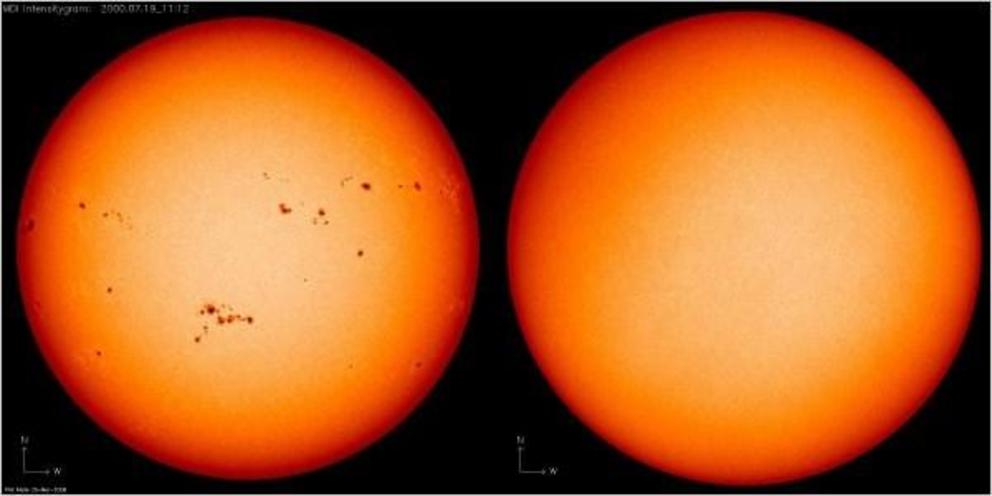
Solar Max vs Solar Min
The cycle was noticed in 1843 by Samuel Heinrich Schwabe, though we have reliable sunspot observations running all the way back to 1610. Just recently, NOAA released an interactive tool cataloging sunspots from 1750. The tool allows you to scroll back through time, comparing sunspot counts now to peaks and valleys of the past — “one thing is clear,” writes Dr Tony Phillips on spaceweather.com, “Solar Minimum is here, and it’s one of the deepest in a century.”
In 2019, the Sun registered 281 spotless days (a new space age record), and 2020 is (so far) producing spotless days at about the same rate.
NASA has correlated previous periods of low solar activity to global cooling (here). But making the correlation yourself is easy thanks to NOAA’s new tool:
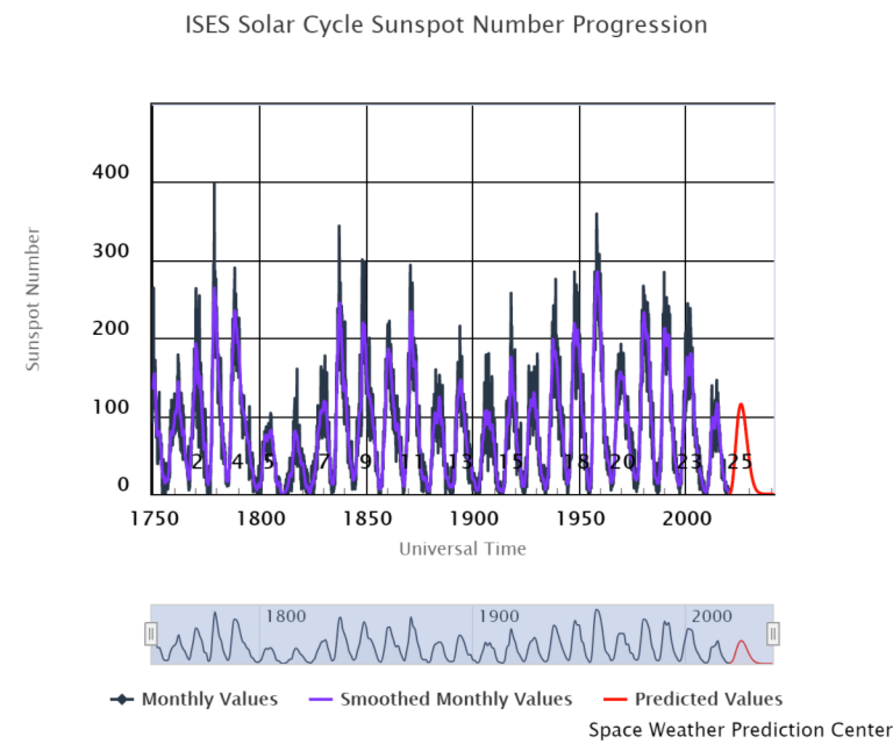
Unfortunately though, comparing the previous Grand Solar Minimum (the Maunder Minimum 1645-1715) can’t be done using the tool. However, both the Dalton Minimum and the Centennial Minimum can be compared.
The Dalton Minimum (1797-1833) brought with it a period of lower-than-average global temperatures. The Oberlach Station in Germany, for example, experienced a 2C decline over 20 years which devastated the country’s food production.

The Dalton Minimum (1797-1833).
The Year Without a Summer also occurred during the Dalton Minimum, in 1816 — it was the result of steadily cooling temps plus the powerful volcanic eruption of Mt Tambora in 1815 (low solar activity has been linked to a volcanic uptick, see here & here). Crop failure tore through Eurasia and the Americas during 1816, which led to food riots, famine, and ultimately the deaths of millions upon millions of people.
Note the time-frame here — the cold didn’t really take hold until AFTER the first weak Solar Cycle (5) had run its course (i.e., there was a lag). The big freeze hit AFTER the next Solar Cycle (6) had already begun–a good 19 years from the start of the Dalton (also note the longer minimums during Cycle’s 5 & 6).
Let’s play that same time-frame out today — 19 years after the onset of Solar Cycle 24 takes us to 2027 — could our big freeze commence around this year?
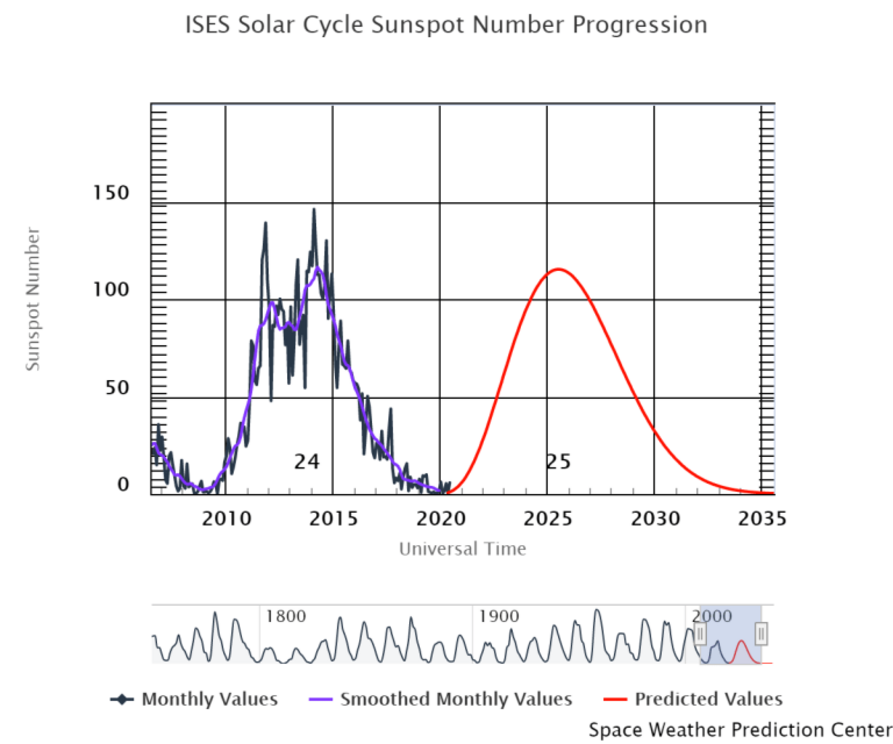
Solar Cycle 24 and NOAA’s forecast for Cycle 25.
NOAA’s forecast sees 2027 on the slide back down towards the Minimum of Solar Cycle 25. However, they assume SC25 will begin in 2020–an eventually by no means set in concrete. Because although Solar Cycle 25 is undoubtedly showing signs of life, the signs -to date- have been small, the Solar Minimum of Cycle 24 is still firmly in charge, and it’s really anyone’s guess how long it will persist…
Looking at the past year of daily solar wind at SOHO, you can clearly see the speed has been decreasing, and that we’re still actually extending lower:
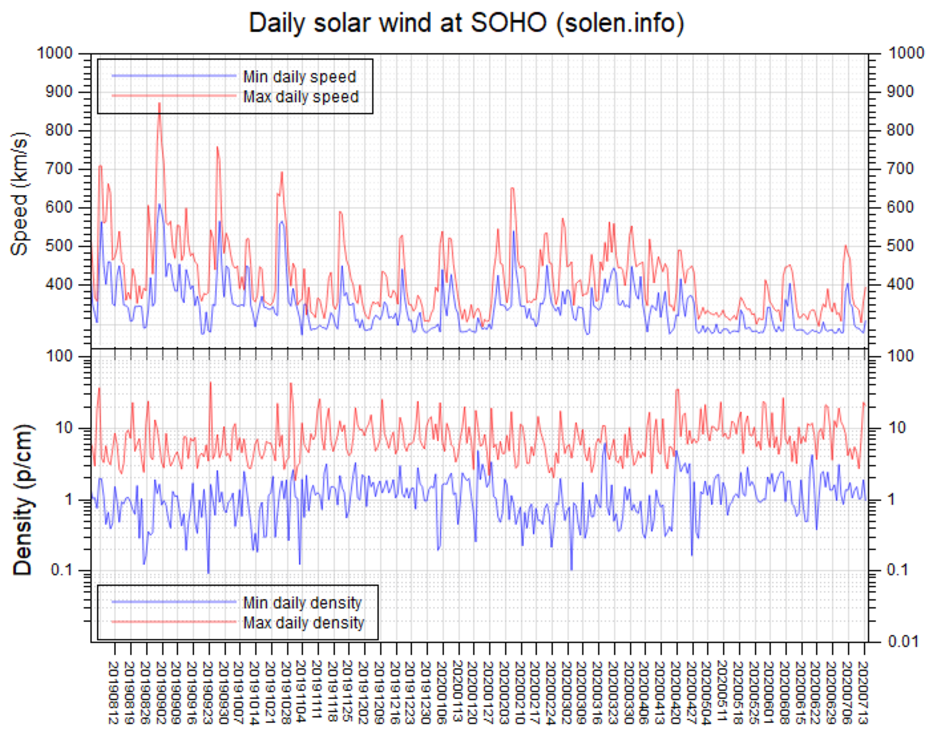
The Electron Flux (below) further supports this — we are holding at or near the bottom, which also indicates we’re still in the minimum of solar cycle 24:
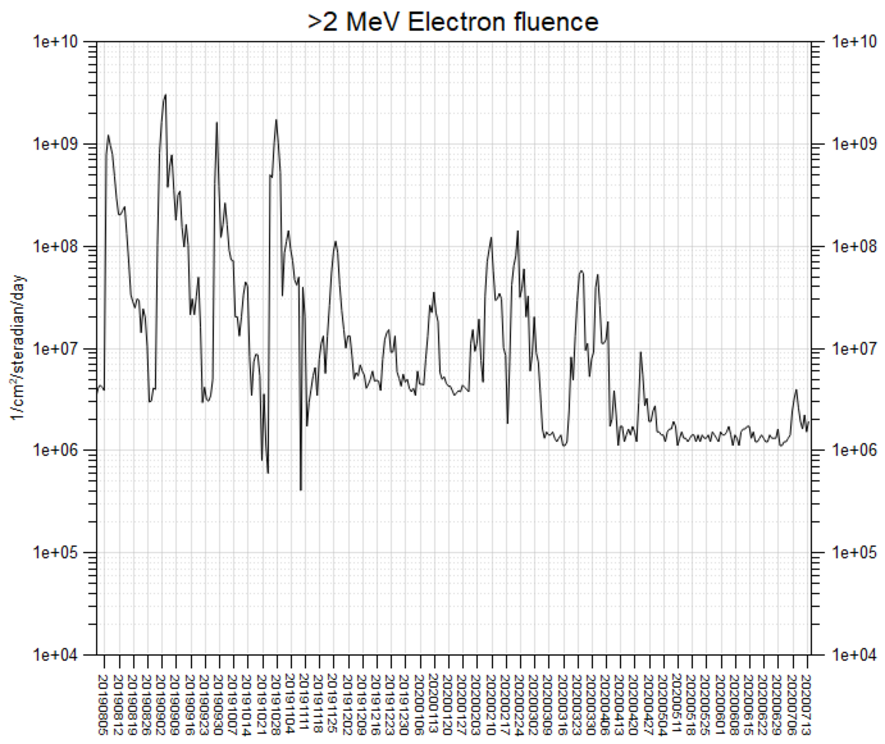
And likewise, the good-old solar cycle sunspot number progression (through May, 2020) also reveals us firmly rooted within the deepest solar minimum of the past 150 years:
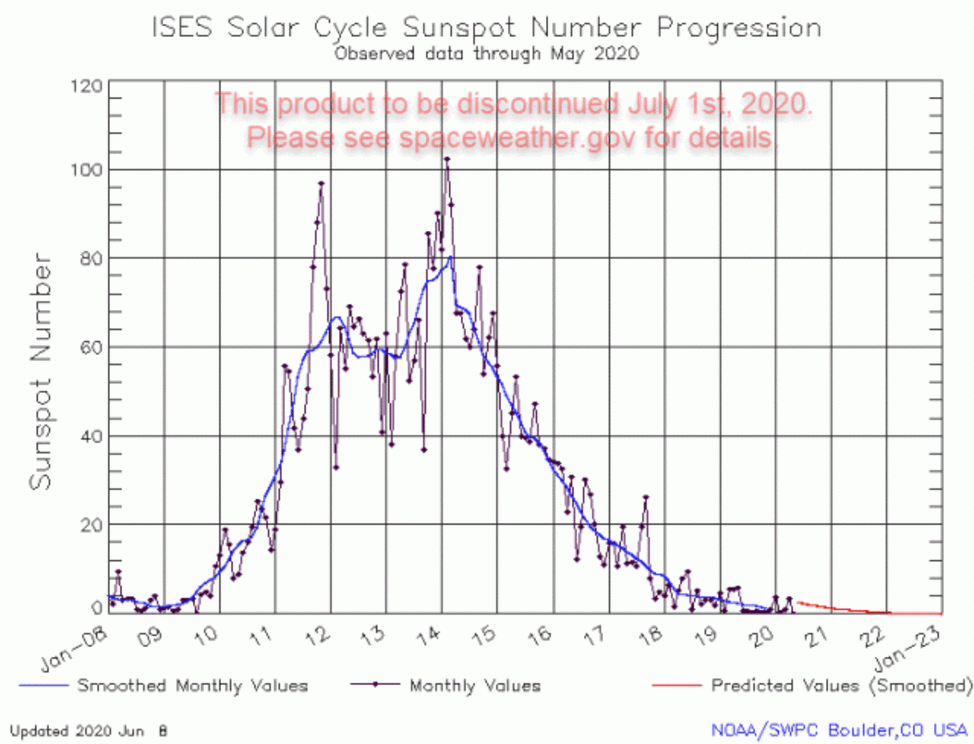
Solar Cycle 25 is on the way, but it isn’t certainly here yet — and with each additional day this deep SM of Cycle 24 drags out, the more we’re going to suffer down the line–the COLDER it’s going to get.
The COLD TIMES are returning, the lower latitudes are REFREEZING, in line with historically low solar activity, cloud-nucleating Cosmic Rays, and a meridional jet stream flow.
NASA, like NOAA, think SC25 will be a weak one — but NASA sees it even lower than NOAA, and have suggested it will be “the weakest of the past 200 years”:

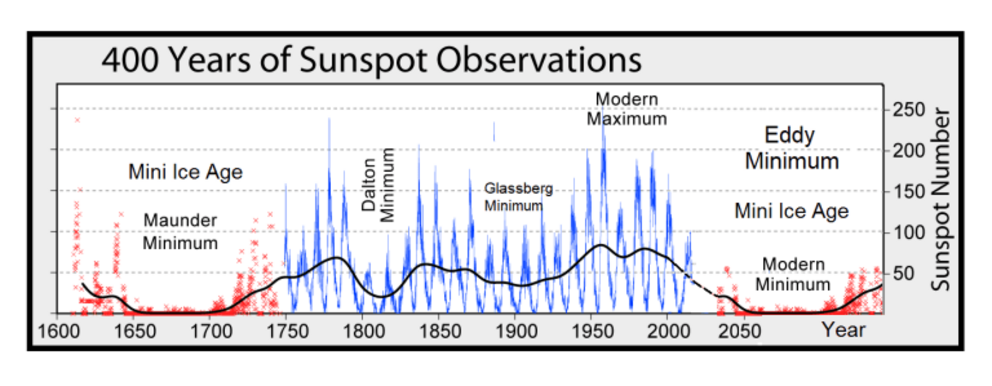
Prepare accordingly — learn the facts, relocate if need be, and grow your own.
Social Media channels are restricting Electroverse’s reach; Twitter are purging followers, and Facebook are labeling posts as “false” — be sure to subscribe to receive new post notifications by email (the box is located in the sidebar >>> or scroll down if on mobile).
And/or become a Patron, by clicking here: patreon.com/join/electroverse
The site receives ZERO funding, and never has.
Any way you can, help us spread the message so others can survive and thrive in the coming times.
Grand Solar Minimum + Pole Shift

